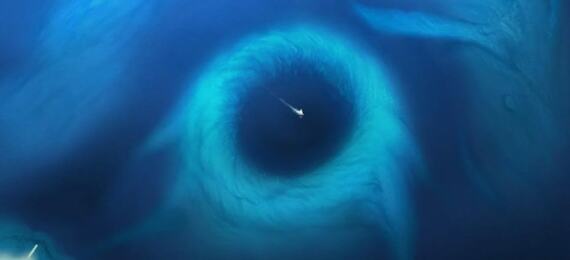
The wonders of the oceans on this earth are many. From deep depressions to highly migratory marine species, there is an infinite amount of secrets surrounding these oceans. If you love nature, especially the oceans, and their myriad miracles, this blog is just for you! Here, we shall discuss anything and everything about the Mariana Trench. So, if you have the question, “How deep is the Mariana Trench?” in mind, read this blog and get to know the answer!
What is the Mariana Trench?
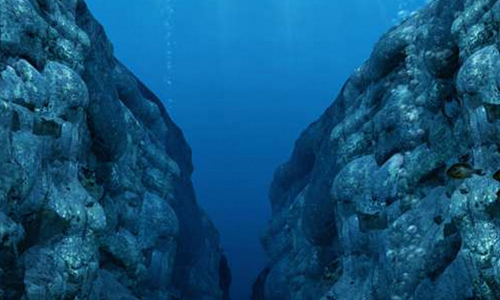
The Mariana Trench is one of the biggest depressions in the Pacific Ocean. Often called “trenches,” the topographic depressions on the ocean floor are topics of huge interest for geologists, and the Mariana Trench is an example of such depressions. This trench spans over 1580 miles, and its mean width is 43 miles. It is in the shape of a crescent and is considered the deepest oceanic trench in the world.
The Mariana Trench is one of the biggest depressions in the Atlantic Ocean
- A. True
- B. False
The deepest part of the ocean is often referred to as the “Hadal Zone.” If you are interested in oceans, beaches, and more trenches, know the unbelievable facts about the star sand beach.
How Deep is the Mariana Trench?
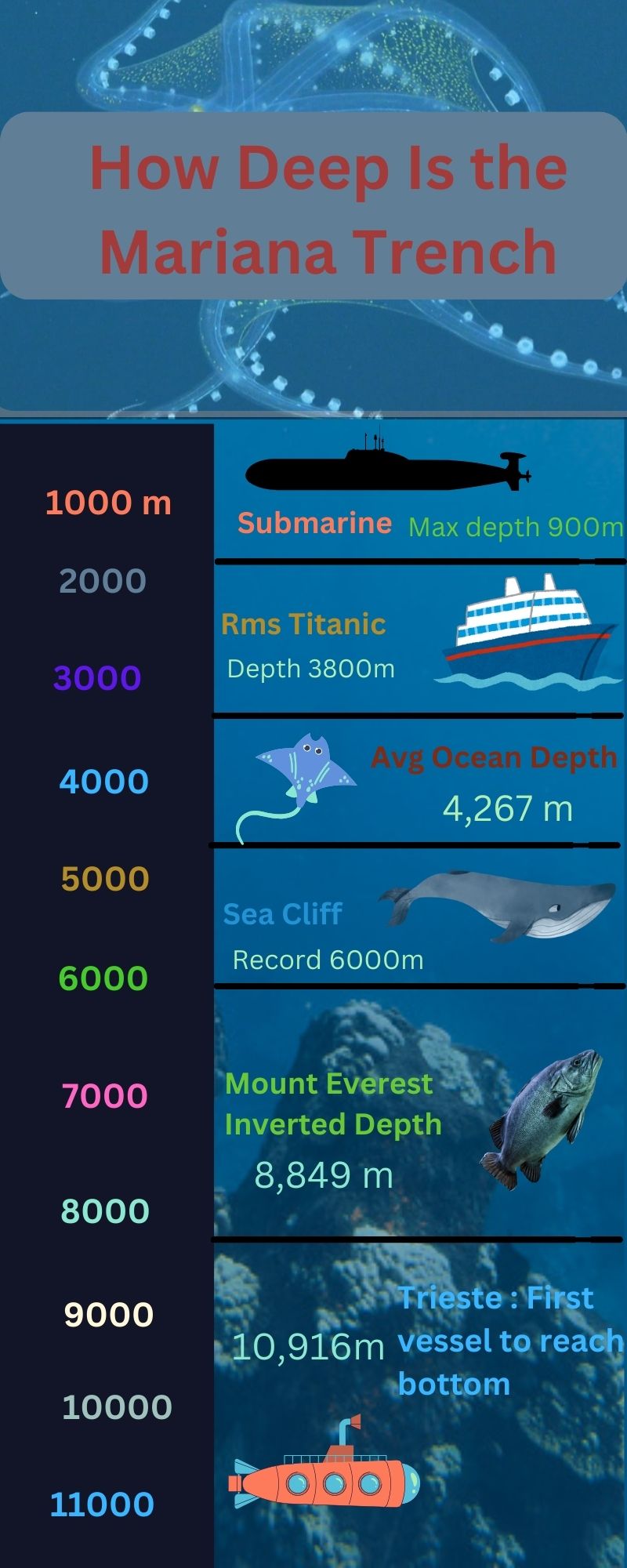
Can you guess the depth of the trench? When you put it in numbers, it’s pretty huge! The Mariana Trench is around 7 miles deep. Or, we can say it is 11 kilometers deep. On the other hand, if you consider its width, it is 5 times wider or broader than it is deep. The depth of the trench exceeds the height of Mount Everest!
While at it, read this study conducted by experts on the Mariana Trench.
Where is the Mariana Trench?

The Mariana Trench is located in the western Pacific Ocean. The trench has got its name because it is located about 124 miles east of the Mariana Islands. In other words, the Mariana Trench is situated 200 miles southwest of Guam, which is a territory in the US. So, the US has complete jurisdiction over this trench and all its resources.
Towards the southern end of the Mariana Trench is the point known as “Challenger Deep.” Geologists state that it is the deepest point on the earth’s seabed.
How Was the Trench Formed?
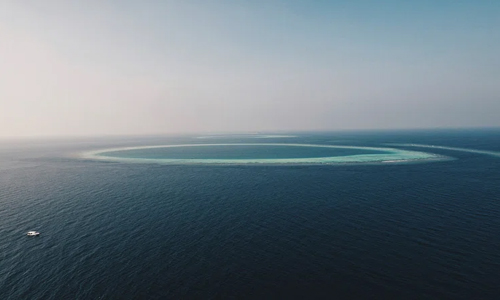
Now that you have the answer to “How deep is the Mariana Trench?” and other questions related to the trench, let’s discuss its formation in detail.
Many people wonder how the trench was formed years back. There might be several theories regarding its formation, but the fact is that the Mariana Trench was created by a process called “subduction.” Have you heard of it before? Whether your answer is “yes” or “no,” we will take you through the steps that explain the formation of the trench.
The Process of Subduction
Our earth’s crust is formed of thin plates. These plates keep floating on the molten rock of the “earth’s mantle.” If you are unaware of the definition of the mantle, we will help you out!
The mantle is nothing but a layer of silicate rock that’s located between the earth’s crust and its outer core. Got it? Awesome! Let’s now continue with the subduction process.
When the thin plates of the earth’s crust float on the mantle, they tend to collide or crash into each other. When the two plates crash, one of them plunges headlong into the mantle. The other plate moves to the top. The movement of the plates results in the formation of a trench, where the plate that has plunged downwards drags the one on the top. This whole process leads to earthquakes, which can sometimes result in tsunamis.
Thus, the Mariana Trench was formed as a result of a subduction process.
What Lives in the Mariana Trench?
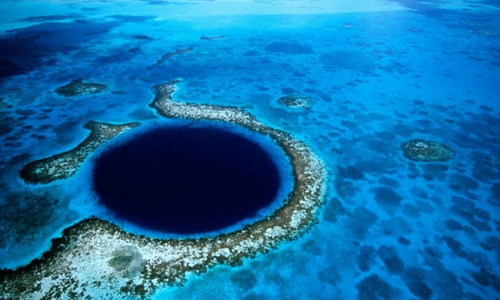
Many assume that living organisms cannot thrive in the deepest parts of the ocean because of the extreme temperature, crushing pressure, and pitch darkness. In fact, the pressure is more than 1000 times the normal pressure at sea level! However, organisms at such immense depths experience less pressure than we assume. The Mariana Trench is home to numerous varieties of deep-sea species. Some of them are described below.
Meanwhile, if you are interested in the layers of the ocean, you can read about them during your leisure time.
1. Giant Squid
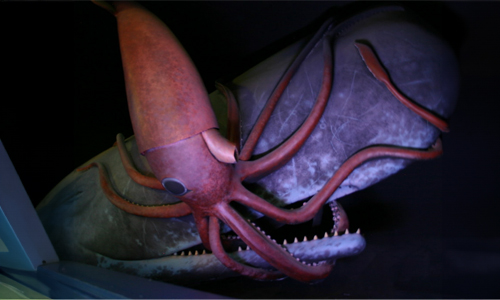
You might already know that a squid has arms and tentacles. In 2019, some researchers captured footage of a giant squid using a deep-sea submersible in the Mariana Trench. The creature was found to be 12 feet long. This was the first time a huge squid was captured in its natural habitat at such great depths. Oceanographer Jyotika Virmani highlights the discovery of a new active octopus nursery in Costa Rican waters, highlighting the vast amount of knowledge about the ocean.
Read also: 8 amazing facts about sea turtles, which are also amazing creatures of the sea.
2. Deep-sea Fish
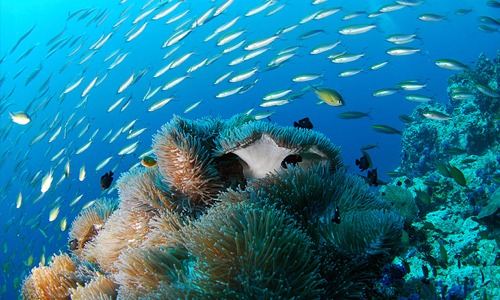
Are you aware of the existence of the Mariana snailfish? It is regarded as one of the “deepest fish” in the world, and it can adapt to extremely high pressure and low temperature. The trench is home to this fish and other deep-sea creatures. Researchers claim that there are over 400 species of snailfishes. Flatfish are also deep-sea creatures that were recorded in the trench.
3. Amphipods
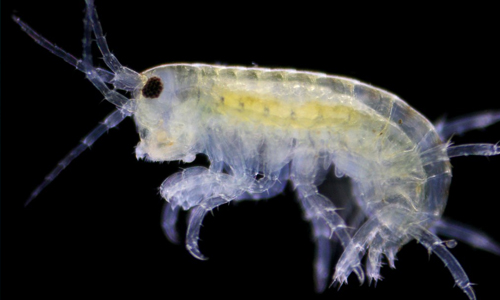
These are tiny crustaceans that live in the seas and oceans of the earth. There is a particular species called “Hirondellea gigas,” which lives at great depths. It is also found in the Challenger Deep of the Mariana Trench. Many of them were collected during the 2009 dive to the trench. A majority of these amphipods survive by scavenging on sunken wood.
4. Microorganisms
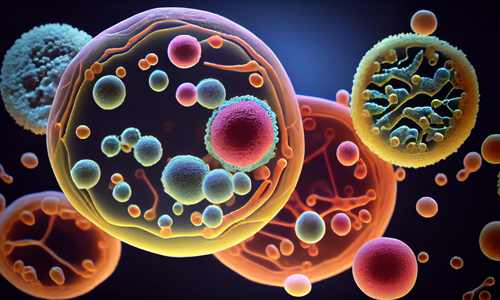
These unicellular organisms, including microbial flora, are found in abundance in the Mariana Trench. This is one of the reasons why researchers call the trench a “biological hotspot.” It is home to some varieties of hydrocarbon-munching bacteria. Other organisms like fungi, actinomycetes, extremophilic, and non-extremophilic bacteria have also been found to dwell in the trench.
Deep sea trenches, like the Mariana Trench, contain lots of organic matter, which attracts microbes. Thus, the depths, which cannot be inhabited by larger organisms, become thriving places for microorganisms.
5. Deep-Sea Jellyfish
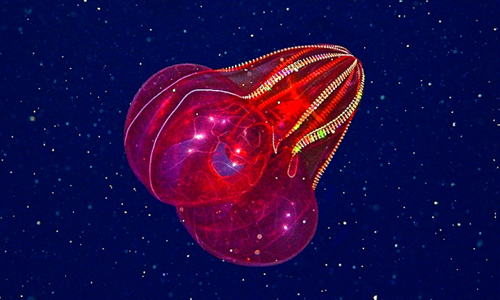
Have you heard of the bloody-belly comb jelly? The Mariana Trench is an awesome habitat for these comb jellies, which are ctenophores. Many assume that they are true jellies, but nothing can be farther from the truth.
The bloody-belly comb jelly has a blood-red stomach, and that is how the creature got its name. It also has cilia, which are hair-like structures using which the ctenophores move in water.
Related Blog: Jelly Fish
6. Cusk Eels
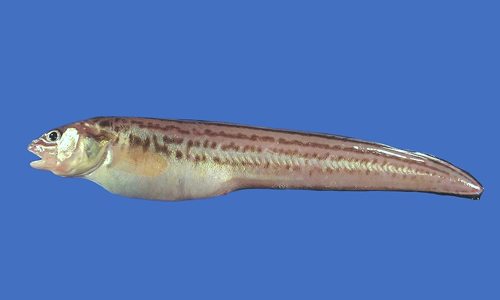
The cusk eel is a deep-sea fish that has an elongated, tapering eel-like tail. A wide variety of cusk eel species can be found in the Mariana Trench. The undulating motion of these eels makes swimming easier at greater depths.
A study published in Zootaxa explores the fascinating world of cusk-eels, a diverse and colorful group of fish found in warmer oceans off the coasts of Fiji, Japan, and the Solomon Islands.
7. Sea Cucumbers
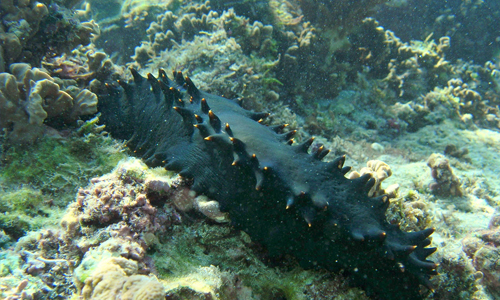
These are also known as “Holothurians.” They have a long body with leathery skin. Sea cucumbers can be found crawling on the ocean floor of the Mariana Trench. Sometimes, they lie dormant. You can see varieties of colors and shapes of sea cucumbers, many of which resemble other organisms or plants. These features allow the creatures to be invisible to their predators’ eyes. Nagoya University professor Manabu Bessho-Uehara leads a team of researchers into the watery world of sea cucumbers, revealing their light-emitting ability.
8. Deep-Sea Shrimp
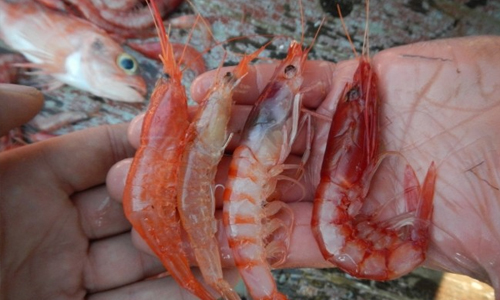
The trench is a suitable habitat for deep-sea shrimp. They have hairy legs to filter food particles on the ocean floor. Other species that resemble shrimps also dwell in the trench.
Related Blog: surprising facts about sea sponges.
Who Went to the Bottom of the Mariana Trench First?

In 1960, the explorer, Don Walsh, and oceanographer, Jacques Piccard reached the Challenger Deep in the Mariana Trench together. They became the first people to go down to the trench and make it a success. 52 years later, James Cameron, the filmmaker, did a solo dive into the Challenger Deep.
Mariana Trench – Nature’s Mammoth Miracle
Now that you have seen the wonders of the Mariana Trench, you will agree that it’s nothing short of a miracle. Its depths can hold lots of secrets and mysteries, but it’s also a place where a billion lives thrive (taking into account all the microorganisms too).
Hope you enjoyed this blog, and have found the answer to, “How deep is the Mariana Trench?” Refresh your memory on the same by answering the Quiz on this page.